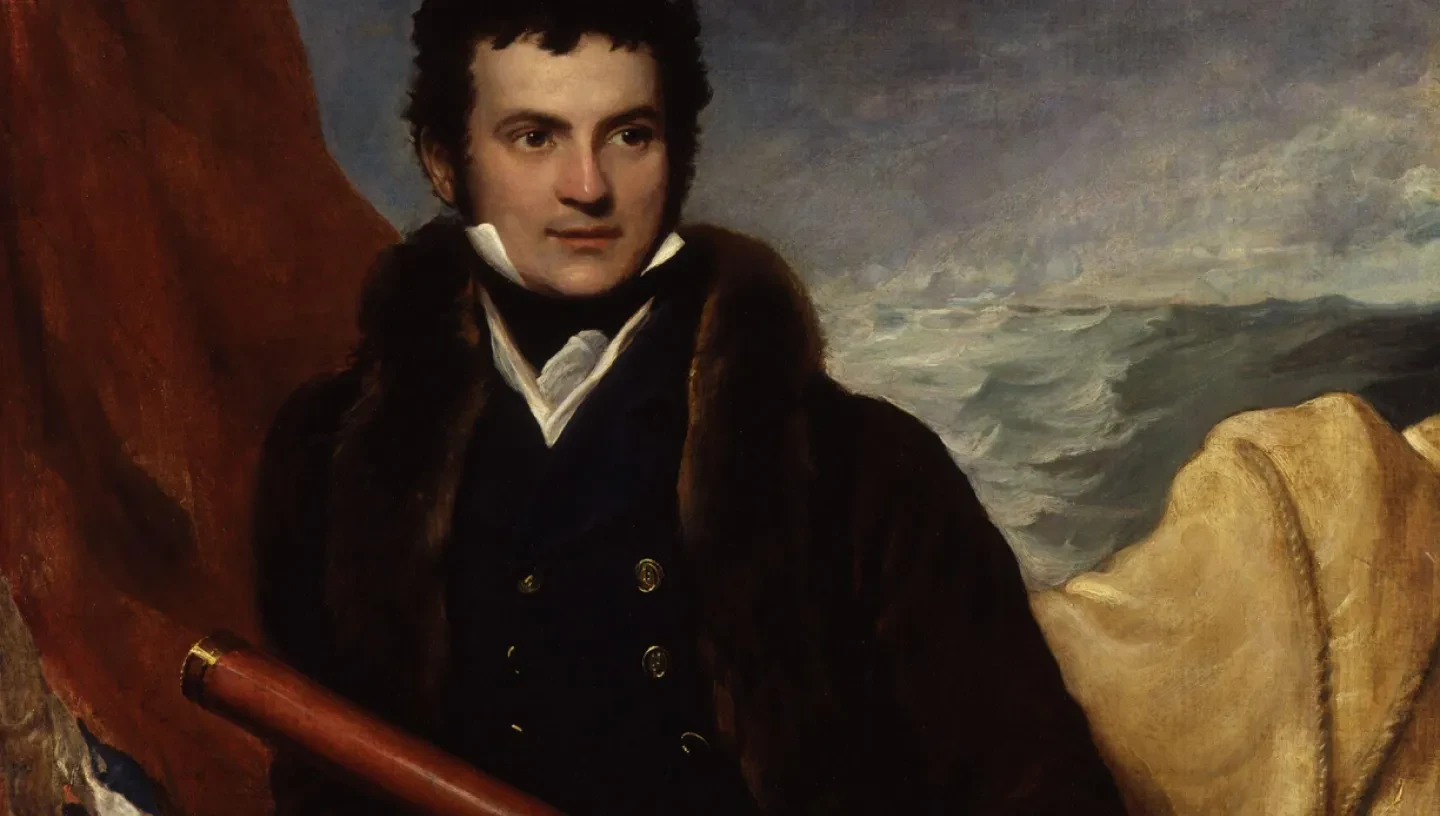
William Edward Parry final North-West Passage expeditions 1821–25
William Edward Parry was a key figure in the discovery of the North-West Passage. He made three voyages to find it and his research was invaluable.
On Parry's first voyage (1819–20) he had discovered there was a passage through Lancaster Sound. He was keen to return to the Arctic to finish his quest to find the fabled North-West Passage.
Parry's second voyage, 1821-23
Parry planned to search for a more southerly route through the north-west corner of Hudson Bay and set sail from Deptford in the Hecla and the Fury in April 1821. He sailed through the Hudson Strait and into Foxe Basin. Here he investigated Repulse Bay but there was no passage through. He pushed north along the coast of the Melville Peninsula but had no luck there either.
In October, the ice closed in and they were frozen in at ‘Winter Island’ for nine months. Keen to avoid boredom among the crew, Parry set up the Royal Arctic Theatre, where shows were presented each fortnight. A school and observatory were also formed.
Parry learned from Inuit in the area that a strait north of their position reputedly led to open water to the west. When the ice set the ships free, Parry made his way to what is now known as the Fury and Hecla Strait. Sadly the strait was choked with ice, although expeditions on foot did reveal a body of water to the west. After a second winter in the Arctic and no further luck in navigating the strait, Parry was forced to return to England due to lack of provisions.
Parry's third voyage, 1824-25
Parry returned in search of the North-West Passage once more in 1824, again with Hecla and Fury. This time he turned his attentions to finding a passage through Prince Regent Inlet. This was Parry’s least successful voyage. Ice in Baffin Bay severely disrupted his progress to Lancaster Sound and the expedition was forced to winter in Prince Regent Inlet.
Farewell to the Fury
When the ice partially relented nine months later, Parry searched for openings on the west side of Prince Regent Inlet but disaster struck when the Fury was forced aground by ice. Unable to repair the vessel it was abandoned and sank, at what is now known as Fury Beach on Somerset Island. The Hecla, with two crews now on board, was forced to return to England owing to the strain on resources, even though Parry thought he could see clear water to the south.
The voyage was not a complete failure. The expedition collected much data on the position of the magnetic pole and arctic wildlife. Also, when explorers John and James Clark Ross reached Fury Beach a few years later, the Fury’s abandoned stores would prove invaluable.